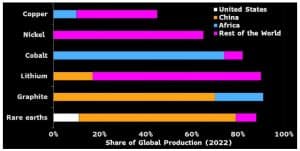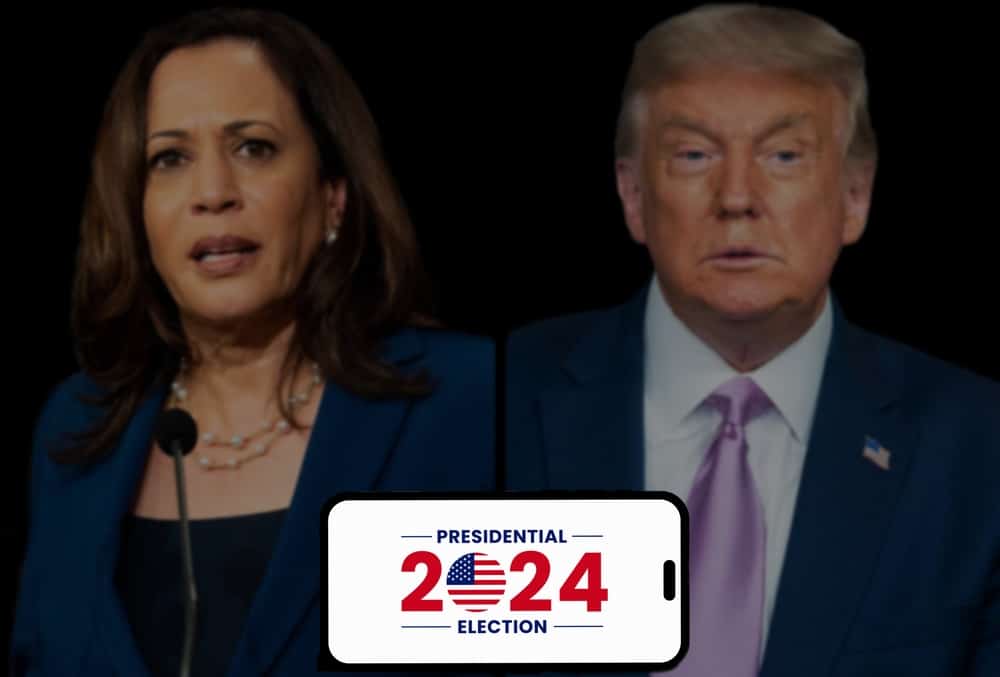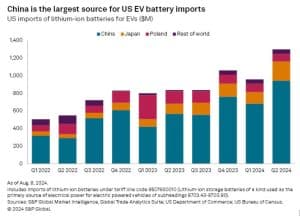The debate over U.S. tariff policies on critical minerals from China is gaining attention as the country approaches its November presidential election. Both major candidates—Vice President Kamala Harris and former President Donald Trump—are likely to continue using tariffs as a tool in the ongoing trade tensions with China.
However, their approaches differ significantly, with each reflecting distinct strategies toward energy transition, industrial policy, and U.S.-China relations.
How Harris and Trump Plan to Use Tariffs in the Energy Race
Under the Biden administration, Section 301 tariffs were imposed on a range of Chinese products, including key components vital to the energy transition. These components, such as lithium-ion batteries and natural graphite, are essential for technologies like electric vehicles and renewable energy storage. These tariffs, which were increased in May 2024, include a 100% tariff on electric vehicles (EVs) and a 25% tariff on critical minerals, excluding lithium.
This strategy is part of a broader effort to reduce U.S. reliance on Chinese imports for critical minerals essential to the energy transition, especially those used in EVs and renewable energy technologies.
Harris’ Approach
Kamala Harris has been a strong supporter of the Biden administration’s climate policies, including the Inflation Reduction Act. The law provides incentives for domestic production and “friendshoring” of critical minerals supply chains.
If elected, Harris is expected to maintain the current administration’s approach, using tariffs strategically to further climate goals. This would likely involve continuing to impose targeted tariffs on specific products that are crucial for the energy transition, thereby encouraging domestic production and reducing dependency on China.
Harris’s potential administration would likely view tariffs as a tool to promote sustainable development and achieve climate objectives, particularly in aligning with international commitments such as the Paris Agreement. By focusing on specific products, her administration could aim to balance the need for critical minerals with the overarching goal of decarbonizing the U.S. economy. This approach is seen by policy experts as a continuation of Biden’s policies, which have been designed to create a level playing field for domestic producers while advancing the country’s climate goals.
Trump’s Approach
In contrast, Donald Trump has indicated that if he were to return to office, his administration would adopt a more aggressive and sweeping approach to tariffs. Trump has previously expressed support for a 60% or higher tariff on all goods imported from China, along with a 10% tariff on all U.S. imports. This broad approach reflects Trump’s longstanding skepticism of trade with China and his administration’s focus on protecting U.S. industries from foreign competition.
A Trump administration would likely implement broad tariffs across a wide range of products, including critical minerals, without the targeted focus seen in the current administration, according to Scot Anderson, energy and natural resources metals and mining subsector head at Womble Bond Dickinson.
Responding on this, Vice President Harris remarked during a speech that Trump’s tariffs:
“…will mean higher prices on just about every one of your daily needs: a Trump tax on gas, a Trump tax on food, a Trump tax on clothing, a Trump tax on over-the-counter medication.”
For policy experts, this would likely result in higher tariffs on all critical minerals imported from China, regardless of their role in the energy transition. Such a policy could be seen as part of a broader strategy to reduce the U.S. trade deficit with China and protect domestic industries.
Can U.S. Producers Thrive Under New Tariff Policies?
The continuation or strengthening of critical minerals tariffs under either administration could provide some benefits to U.S. producers.
Companies like Pure Lithium Corp., a Massachusetts-based lithium company, view tariffs as beneficial for attracting investors and promoting domestic production. Tariffs can create market certainty, which is crucial for companies looking to scale up operations in the U.S.
The potential differences in tariff policy between Harris and Trump highlight the broader debate over how the U.S. should approach trade and industrial policy in the context of the energy transition.
Harris’s continuation of targeted tariffs would likely focus on achieving climate goals and reducing dependency on China for critical minerals. On the other hand, Trump’s broad tariffs could prioritize protecting U.S. industries but at the risk of higher costs for clean energy technologies.
The U.S.-China Tug-of-War for Critical Mineral Dominance
As the presidential election approaches, the competition to secure critical minerals essential for clean energy production is intensifying. Regardless of whether Donald Trump or Kamala Harris emerges victorious, the next administration will need to focus on strengthening the U.S.’s position in the global race for these vital resources.

Africa holds more than a 5th of the world’s reserves of crucial minerals like cobalt, copper, nickel, and lithium. However, China has established a more significant presence in Africa, with more operational mines on the continent than the U.S., making America vulnerable to potential supply disruptions and price surges in these critical inputs.
To counter China’s dominance in Africa’s critical mineral space, the U.S. will need to develop strategic partnerships and trade agreements with African nations. One key initiative in this effort is the African Growth and Opportunity Act (AGOA), a flagship U.S. program that provides nearly 40 sub-Saharan African nations with duty-free access to the American market.
African trade ministers have called for a swift renewal of the AGOA deal, urging that it be extended for at least 16 years with minimal changes to stabilize commerce, promote investment, and preserve regional value chains. The U.S. has a significant opportunity to close the gap with China, especially as greenfield foreign-direct investment into Africa’s extractive industries declines.
As the U.S. moves toward the 2024 election, the future of tariff policy on critical minerals remains a key issue. Both Harris and Trump are likely to use tariffs as a tool to address trade imbalances with China, but their differing approaches reflect broader visions for the U.S. economy and its role in the global energy transition.



